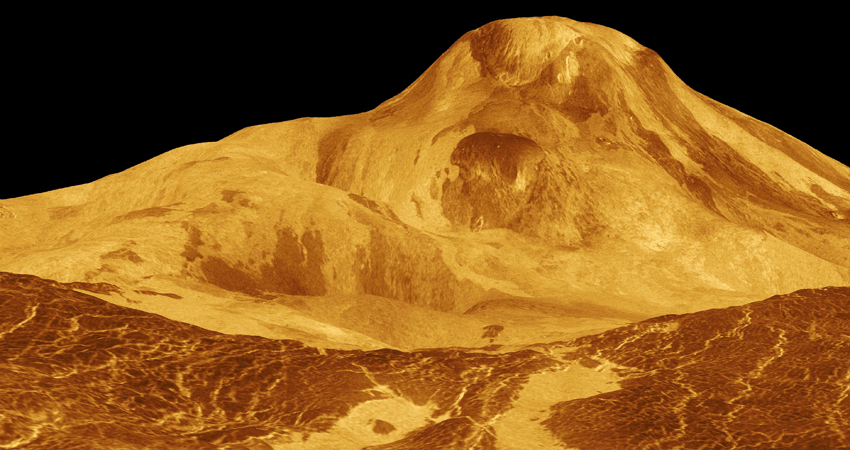We’ve all heard the quote, “Men are from Mars; women are from Venus,” but how many of us actually know why that saying stands? Do you know its astrological significance, or the mythology behind the only planet in our solar system named after a female figure? With help from Divine Love Astrology and Person-to-Person Astrology, let’s explore nine fascinating facts you likely didn’t know about the “Morning Star” planet.
-
Hail to the V
The symbol of Venus (♀) is the circle of solar spirit, above the cross of duality (earthly existence). This suggests that at the level of Venus, our spirit feels at home on Earth. Venus represents affections and symbolizes our sensual nature, sense of beauty, and values. The Venus level of consciousness creates the desires for intimacy and comfort, to possess and be possessed, to fulfill our biological needs and purposes, and to provide for our loved ones and for ourselves.
-
…Women are from Venus
Astrologically, Venus and Mars are usually treated as a pair and together symbolize the broad range and variety of romantic feelings, erotic desires, aesthetic tastes, and sexual attraction that are an important part of any intimate relationship. While Venus attracts others though beauty, kindness, and charm, Mars goes after what it wants more directly and aggressively, through the demonstration of power, strength and effectiveness. Together, Venus and Mars ideally link personal emotional needs and ideals about love (Venus) with sexuality (Mars).
-
The one and only
Venus is the only planet in the solar system to be named after a female figure. According to Roman mythology, the goddess Venus was known for her beauty, sexuality, desire, love, and grace. Ironically, Venus was born out of extreme violence–rising fully-grown from the churning sea after her brother, Saturn, castrated their father, Uranus, whose semen fell into the ocean.
As the story goes, Venus became very unhappy in her marriage and had an affair with Mars. After being caught in the act by her husband, he promptly divorced her. Venus’ decision to pursue her true love for Mars, even if it cost her everything, was further proof that following one’s heart is not without consequences, but that without it, you cannot not truly love. Her central message appears to be: It is crucial to honor love above all else; if you dishonor the workings of the heart, you will eventually suffer for it.
-
Sister sister
Venus and Earth have long been considered “sister” planets due to their similarities in mass, density, volume, and size (with only a 639 km or 397 mi difference in diameter); both have a central core, a molten mantle, and a crust. Additionally, Venus is the closest planet to Earth, at an average distance of 25½ million miles, and is the 2nd closest planet to the Sun.
-
Switch it up
While most planets in the Solar System rotate counter-clockwise on their axis, Venus and Uranus are the only two planets that rotate clockwise. Known as a retrograde rotation, this anomaly was likely caused by a collision with an asteroid or other large object, which caused the planets to change their rotational direction.
-
It’s getting hot in here
Today, the average temperature on Venus’ surface is 863°F. However, billions of years ago, the surface of Venus was similar to that of Earth, possessing large amounts of water and oceans. Unfortunately, Venus’ atmosphere is dense and contains 96.5% carbon dioxide, which traps heat, and has resulted in the evaporation of any water sources on the planet. Because the water boiled off so long ago, the surface of the planet is now too hot and hostile to sustain life.
-
The Morning Star
From Earth, Venus is visible up to 47 degrees away from the Sun. Just before sunrise or just after sunset, Venus can be seen as a bright morning or evening star.
-
Goodnight moon
It is suspected that at one time, millions of years ago, Venus had a moon, but a large collision with another object (an asteroid or meteor) caused Venus to retrograde (spin in the opposite direction), allowing the body of the planet to absorb its own moon.
-
Over the hill
Technically, Venus was formed at the same time as the rest of the solar system, 4.6 billion years ago, when gas and dust particles collided together to start the formation of a tiny planetoid. It wasn’t until billions of years later (about 300–400 million years ago) that the actual surface of Venus was formed. In comparison, the surface of the Earth is only about 100 million years old.
Sources:
- NASA/JPL, “PIA00254: Venus – 3-D Perspective View of Maat Mons.” Added March 14, 1996.
- Shiva Das and Mercy Ananda, Divine Love Astrology: Revealing Spiritual Truth for Personal Transformation (Berkeley: North Atlantic Books, 2014).
- Stephen Arroyo, Person-to-Person Astrology: Energy Factors in Love, Sex & Compatibility (Berkeley: North Atlantic Books, 2011).
- ThePlanets.org, “Venus Facts: Interesting Facts about Planet Venus The Planets.” Accessed July 25, 2016.
